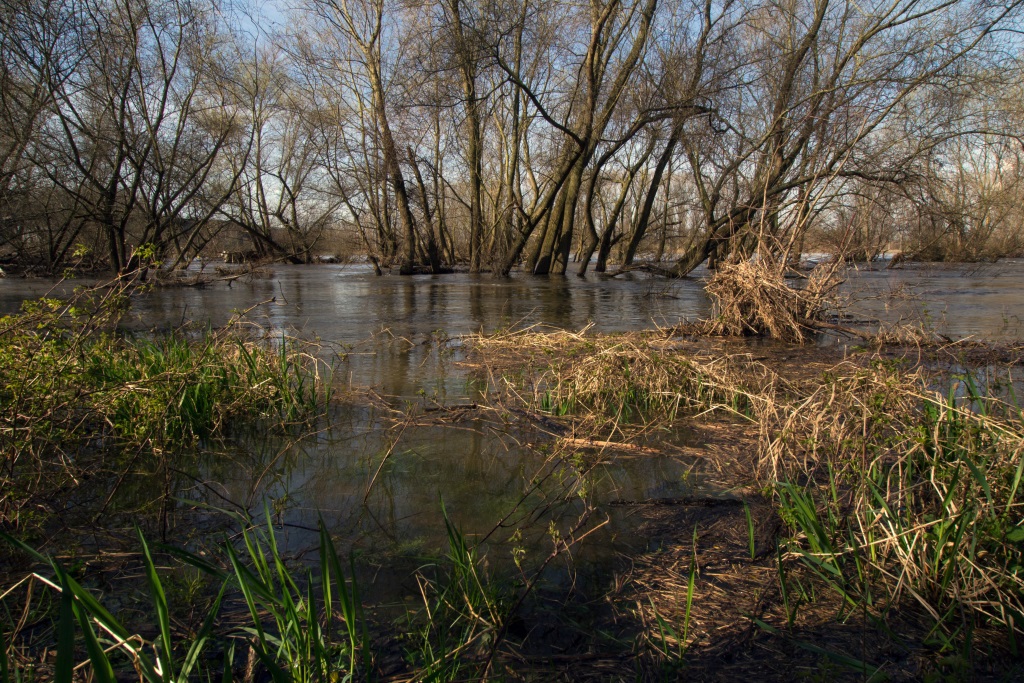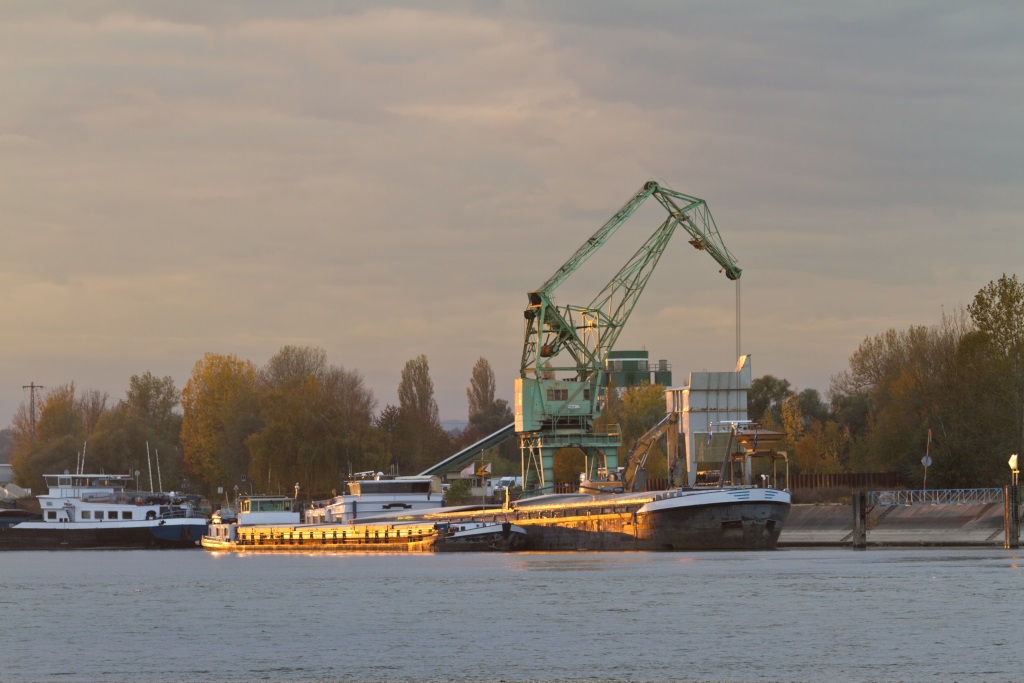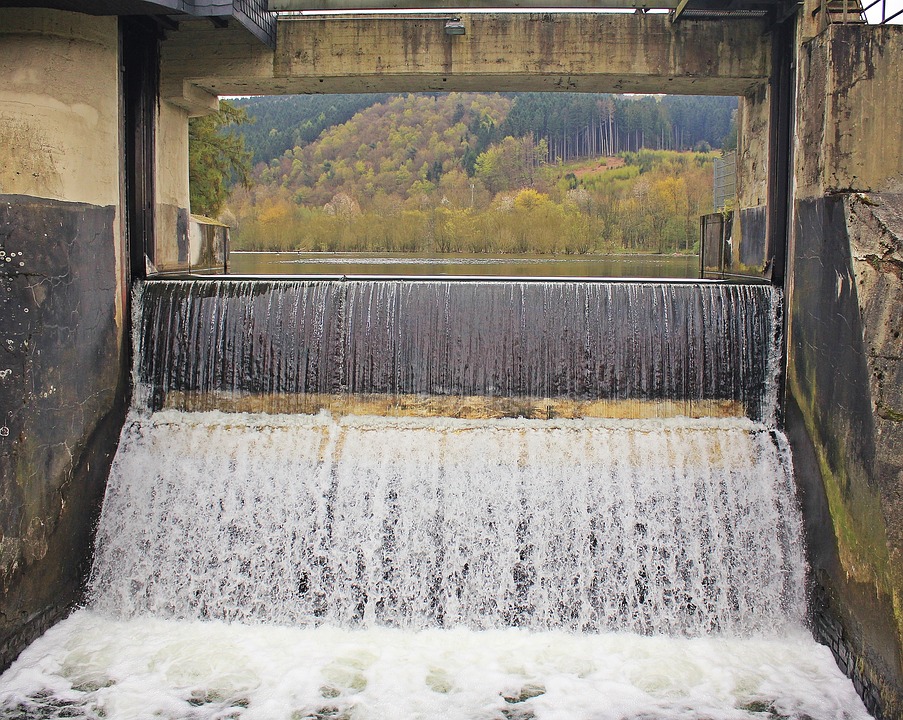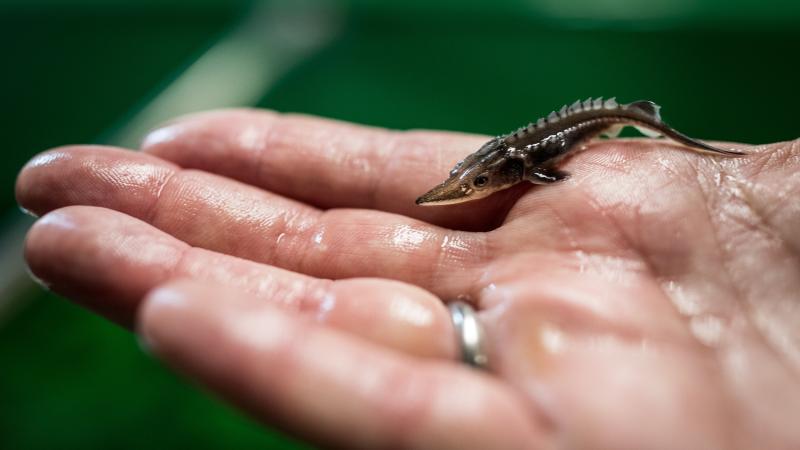
The Vltava meanders in its natural stretches, winding through the Bohemian Forest - a picture that has become rare. | Photo: Pixabay
 Natural floodplain | Photo: Pixabay
Natural floodplain | Photo: Pixabay
What does a natural river look like?
Rivers traverse our landscape like veins. Their water is the basis for all life. Plants need it to grow, land animals use it to quench their thirst, and fish use it as their habitat.
A river originates from a spring, unites with tributaries and eventually flows into the sea. Along the way, the water in the river follows the gradient of the landscape, from the highest to the lowest point. Flowing water is very powerful; it can erode mountains, move stones and sand. Resultingly, the river carves its way through the landscape. In doing so, the riverbed creates very winding and curving sections, so-called meanders or braided sections with lots of little islands. As the river is constantly moving sediment around, the riverbed is constantly changing. The dimensions of the riverbed depend upon the water level, it can reach a width from a few metres to several kilometres.
However, there is more to a river than a quick-moving current: islands surrounded by water, gravel beds and wetlands are interconnected and offer many creatures a retreat. Wetlands are the areas in the vicinity of the river which are influenced by its changing water levels, and which fulfil important roles within the river. In their natural state, they are capable of absorbing high amounts of water, thereby moderating floods, retain sediments and thus function as carbon reservoirs.
 Freighter on the Rhine | Photo: 123rf
Freighter on the Rhine | Photo: 123rf
Why are most rivers canalised nowadays?
Rivers have been important transport routes for many centuries, as, for a long time, ships were the only method of long distance transport of goods before rail and roads became well developed: Still nowadays shipping connects people across seas and is still the most important means of transport of raw materials such as coal, oil, and processed products such as electronics, industrial goods and agriculture products.
However, many natural, curving rivers whose water levels are constantly changing present shipping with problems. Large freight ships cannot pass through diverse waters, as they would get stuck in narrow curves and shallow sections. For this reason, men deepened and straightened the rivers. For this, the curving sections of river were cut through to straighten the course of the river. Along with the construction of groynes and the fixation of banks to prevent erosion, the depth of the river is increased and that ships can be loaded more heavily. At the same time, the flow speed of the rivers is increased, transporting more sediment and cutting the river deeper in the channelized bed. This results in a drop of the groundwater level which leaves the previous wetlands dry.
 Barrages | Photo: Pixabay
Barrages | Photo: Pixabay
To make rivers more navigable for ships, dams and weirs were also build, which enabled the regulation of the water levels as required. Such structures also contribute to the generation of energy: water is piped over turbines or water wheels at the barrages, setting them in motion. People were already using this method in the early days for milling corn; nowadays we use it to generate electricity.
The expansion of shipping and hydroelectric power is responsible for the ever-increasing construction activities on our waterways in the past century. Today, there are no longer any natural rivers in Germany. Instead we have ‘engineered rivers’ aimed at combining the various uses of shipping, wastewater discharge and provision of drinking water, as well as energy production. As an example, the straightening of the Oder began around over 300 years ago – today, it is almost one third shorter that than before the works started.
 Flooding in Meissen | Photo: Pixabay
Flooding in Meissen | Photo: Pixabay
What are the disadvantages of an engineered river?
By straightened and side channels as well as backwaters being cut off to maintain as much water as possible in the main channel numerous habitats such as wetlands and meanders are lost. Additionally, the straightening of rivers increases flow velocity, increasing the discharge of floods but also increases – especially in conjunction with the construction of dykes – the amplitude of such floods since the water is not retained in the landscape. With the loss of wetlands, the landscape loses its ability to absorb water. Instead, surplus rainwater flows quickly into the nearest river, gathers in the confluences and creates floods. As a result of the combined measures, the habitats of water bourne organisms disappear and with them a large proportion of the biomass and diversity that historically inhabited the river and its wetlands.
The increases flow velocity and the lack of sedimentation areas leads to increases transport of fines on the river bed. As such, gravel comes covered with sand. Many fish, including the sturgeon, use gravelly sections of the river as spawning grounds, which are lost in straightened rivers are.
To regulate flow, weirs are built. However, these measures also create their own problems: Weirs, which are supposed to regulate the water level and at the same time serve as a provision for energy, also only offer a limited measure of safety. They in no way represent an infinite capacity with which to hold excess water in these cases even increasing the flooding effects that they are planned to prevent. Additionally, they prove to have devastating consequences for many inhabitants of the river. The migration of many fish is especially impeded due to weirs which in many cases are impassable. Where passage is facilitated, the change in temperature, oxygen contents and flow make it difficult for migrating fish to cope with these conditions. These challenges make the already-arduous journey of the migratory fish even more difficult and time consuming. Therefore, we need to reverse human meddling in our rivers to the bare essential minimum, granting its inhabitants the same right as humans claim for themselves.



